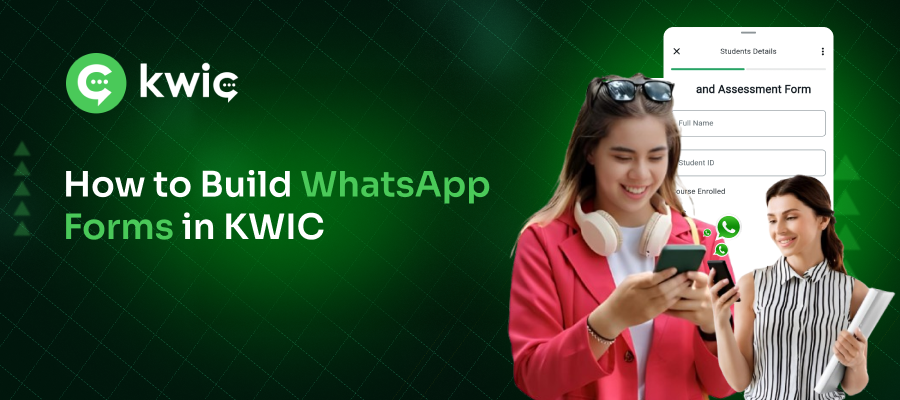Creating a WhatsApp form using the KWIC platform is a simple and structured process. It involves designing a conversational flow, integrating it with your WhatsApp Business account, and submitting it for approval. Follow this step-by-step guide to set it up efficiently.
Step 1: Design the Flow for the WhatsApp Form
Begin by creating a flow that will function as your WhatsApp form. To do this, visit the Meta Playground, a tool that allows you to design interactive flows. These flows can collect key user details such as Name, Email, Company Name, and Category preferences. As you design the form, you can preview how it appears on the right side of the screen and customize it according to your business needs.
Step 2: Build the Flow in Meta Playground
In Meta Playground, create a new flow and define the required fields. These may include text inputs or multiple-choice questions. You’ll be able to preview how the form behaves in real time. Make sure to align the flow with your data collection goals.
Step 3: Copy the Flow JSON
Once your flow is complete, copy the Flow JSON. This code contains the entire structure and logic of your form and will be needed in later steps.
Step 4: Access WhatsApp Manager via Meta Business Suite
Log in to your Meta Business Suite account and go to WhatsApp Manager. Select your WhatsApp account, then go to the Flow section on the left-hand menu. Click “Create Flow,” assign it a name and category, and paste the previously copied Flow JSON into the edit panel on the right.
After saving the flow, click Run and then Publish. Also, copy the preview word (e.g., “recommend”). Once published, refresh the page. On the Dashboard, you’ll find the Flow ID, which will be required while creating the template.
Step 5: Log into the KWIC Application
Return to your KWIC dashboard and log in using your credentials. Navigate to the WhatsApp Flow section. Click the Sync button on the right-hand side. Your newly created flow will now appear in the list. Click the Edit option, paste the same Flow JSON into the provided section, and click Update to complete the integration.
Step 6: Create a Template in KWIC
Next, create a WhatsApp template within the KWIC platform. If you need guidance on this step, refer to the KWIC documentation titled “How to Create a Template and Submit for Approval in KWIC.” This template will act as the message that triggers the WhatsApp form flow.
Step 7: Choose a Flow Button
During template creation, select the Flow Button option. This enables the flow to be activated when the recipient clicks the button in the WhatsApp message.
Step 8: Paste the Flow ID
In the flow button configuration, paste the Flow ID and the Preview word (e.g., “recommend”) that you copied earlier in Step 4. This links your button to the specific WhatsApp form flow.
Step 9: Submit the Template for Approval
Once the template is completed, submit it for approval by WhatsApp (Meta). While approvals are generally processed quickly, the timeline may vary depending on Meta’s review procedures.
Step 10: Start Using the WhatsApp Form
After the template is approved, you can begin using the WhatsApp form in your customer engagement campaigns. Send the template to your customers so they can review and fill out the form directly within WhatsApp. Once submitted, their responses are recorded in your KWIC system.
To view the results, go to your KWIC dashboard, navigate to the WhatsApp Flow section on the left-hand menu, and select the relevant flow. Here, you’ll be able to view all submitted data and export it for further use. Please note that data is currently available only daily, meaning you can export the form data one day at a time.
